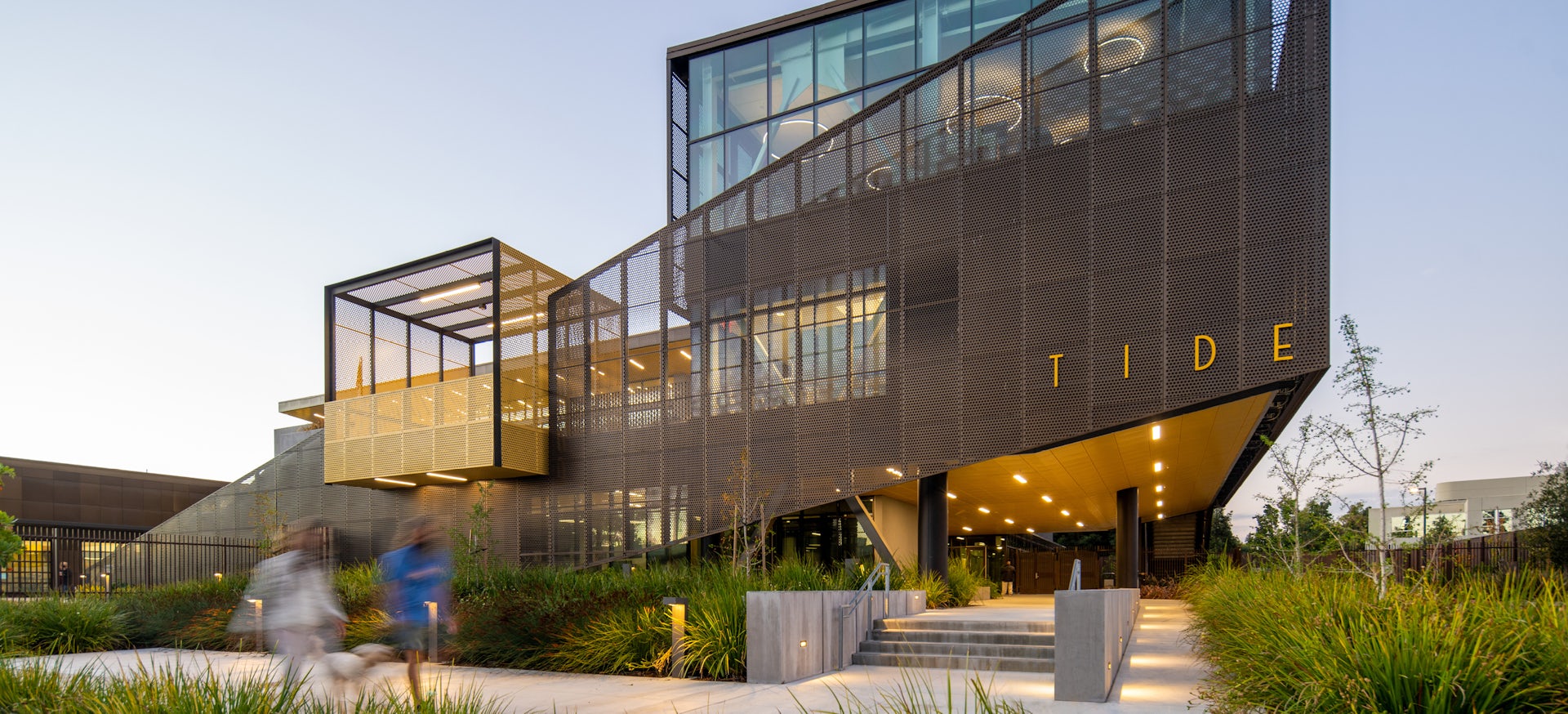TIDE Academy earns a Merit Award for a design that pioneers new ways of learning and blends indoor and outdoor spaces to foster innovation and collaboration.
LPA Design Studios was recently honored by the Texas Chapter of the American Society of Landscape Architects with a Merit Award in the 2023 Professional Awards.
The award recognizes LPA’s design of TIDE Academy, a public STEAM-focused school in Silicon Valley that embodies the entrepreneurial spirit of the nearby tech industry. With a design focused on openness, compactness and innovation, designers optimized a small, 2-acre site to accommodate 400 students. Learning happens everywhere on the campus, which is designed around flexible outdoor spaces that let students define their own educational experience.
The ASLA jury praised the project for its “beautiful layout and integration of the buildings with the plazas and landscapes.”
“TIDE empowers students to develop their strengths, collaborate with their peers and explore ways of learning that are simply not possible on a traditional campus.” — Kari Kikuta, LPA Director of Landscape Architecture
The landscape award is the latest in a series of design honors for TIDE. The campus earned the national AIA Architecture Award, the AIA Committee on Architecture for Education’s Award of Excellence, and a Coalition for Adequate School Housing (CASH) Award of Excellence, in addition to an award for lighting design from the Illuminating Engineering Society of SoCal.
“TIDE empowers students to develop their strengths, collaborate with their peers and explore ways of learning that are simply not possible on a traditional campus,” says Director of Landscape Architecture Kari Kikuta.
The project stands out for its seamless integration of indoor and outdoor spaces. The heart of the campus is a central courtyard that spills out from a central multipurpose space. This vibrant hub serves as a catalyst for collaboration, with outdoor classrooms and gathering spaces encouraging students to connect with nature and each other.
Innovative features such as interactive 'huddle' spaces and exterior learning zones empower students to explore beyond the limits of traditional classrooms. Catering to multiple learning preferences, the design promotes hands-on experimentation and exploration and fosters a culture of innovation and creativity.
Student well-being is prioritized throughout the camps, with green spaces and planting areas bringing nature to every floor. Drought-tolerant and native vegetation focus on low maintenance and low water use. Stormwater is captured from roof and parking areas and conveyed to bioretention basins, providing hands-on learning opportunities while providing on-site treatment.
















